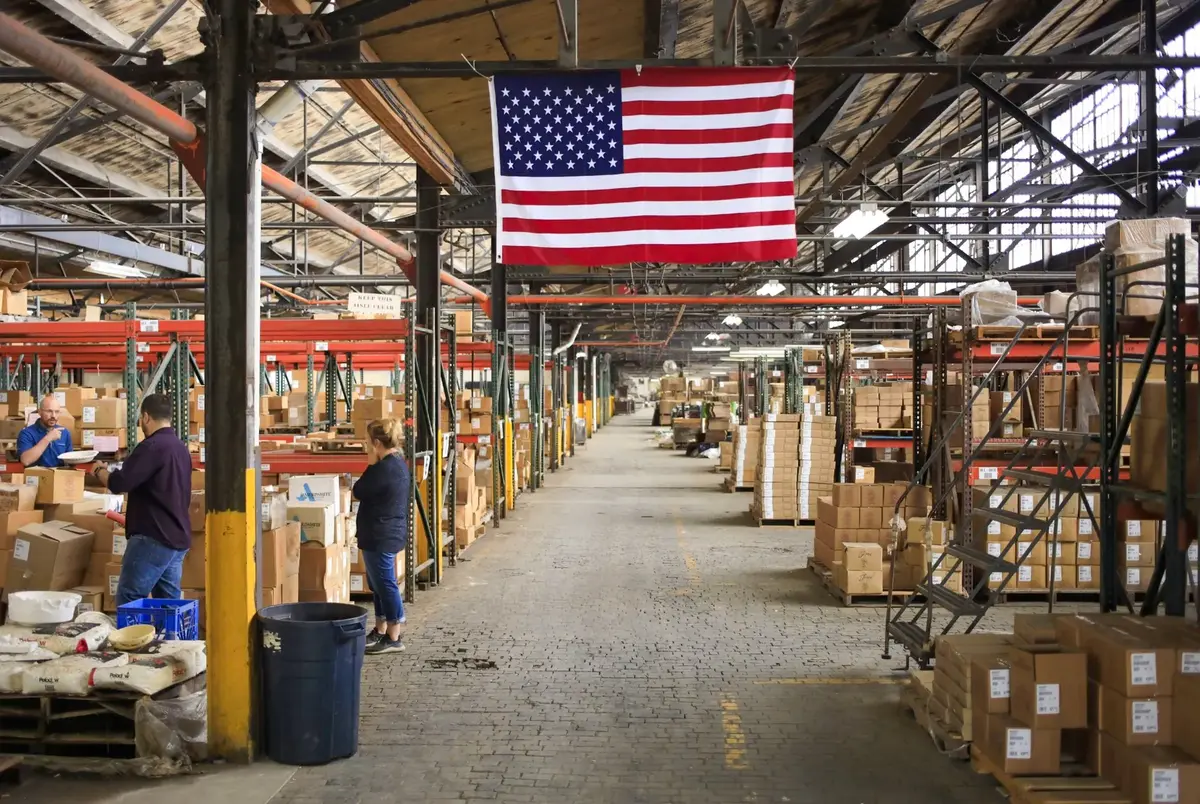
Trends Shaping the Future of Warehousing in the USA
Warehousing is the backbone of the USA supply chain, serving as a critical link between manufacturers, distributors, and end consumers. In the USA, where the e-commerce boom and technological innovation continue to reshape industries, the warehousing sector is undergoing rapid transformation. Adopting the latest trends is no longer optional; it’s essential for staying competitive in a fast-paced market.
Technological Advancements Driving Warehousing
Automation in Warehousing
Automation has become the cornerstone of modern warehousing. With the integration of robotics and automated guided vehicles (AGVs), warehouses are achieving new levels of efficiency. Robots can handle repetitive tasks such as picking and sorting items, reducing the likelihood of errors and speeding up operations.
One notable example is the use of automated conveyor systems, which streamline the movement of goods across large facilities. By minimizing manual intervention, businesses can focus on strategic operations, such as optimizing supply chains and improving customer service. These automated systems also help reduce labor costs, making warehouses more cost-effective in the long term.
Artificial Intelligence and Machine Learning
Artificial intelligence (AI) and machine learning are revolutionizing how warehouses operate. Predictive analytics powered by AI enables better inventory management, ensuring products are always in stock without overburdening storage capacity. These technologies can also analyze historical data to forecast demand patterns, reducing waste and improving planning accuracy.
For instance, AI-powered demand forecasting tools allow businesses to prepare for seasonal spikes, ensuring they meet customer expectations. Additionally, machine learning algorithms optimize warehouse layouts, helping to streamline picking routes and minimize travel times for workers.
Internet of Things (IoT)
IoT is another game-changer in the warehousing industry in USA. IoT sensors provide real-time updates on inventory levels, temperatures, and equipment status. This real-time data empowers managers to make informed decisions, preventing stockouts, spoilage, or equipment failures.
Moreover, IoT devices enable the tracking of goods throughout the supply chain, enhancing transparency. For example, a manager can monitor the exact location and condition of perishable items in transit, ensuring they arrive fresh and undamaged.
Cloud Computing and Data Integration
The adoption of cloud computing is reshaping data management in warehouses. Cloud-based systems allow for seamless data sharing across different departments, ensuring that everyone is on the same page. This integration reduces communication gaps and enables faster decision-making.
Real-time access to data is particularly valuable for tracking shipments, managing inventory, and coordinating with suppliers. By centralizing information, warehouses can achieve greater operational efficiency and respond to market changes more effectively.
The Rise of E-Commerce and Omnichannel Fulfillment
Impact of E-Commerce Growth
The explosive growth of e-commerce has fundamentally changed the way warehouses operate. In the USA, online shopping trends demand faster and more efficient logistics solutions. This shift has led to the proliferation of smaller, strategically located warehouses designed to serve local markets. Known as “fulfillment centers,” these facilities allow businesses to deliver products to customers within days, or even hours, of placing an order.
Moreover, the surge in online shopping has increased the volume of orders, requiring warehouses to handle diverse inventory at unprecedented speeds. Companies like Amazon have pioneered solutions such as same-day delivery, pushing competitors to rethink their supply chain strategies to keep pace.
Omnichannel Fulfillment Strategies
Omnichannel fulfillment has become a buzzword in the warehousing sector. This approach integrates online and offline sales channels, enabling customers to seamlessly purchase products through their preferred medium. To achieve this, warehouses must manage inventory across physical stores, e-commerce platforms, and distribution centers.
For example, “buy online, pick up in store” (BOPIS) is a popular omnichannel strategy that relies on precise inventory management. Similarly, reverse logistics—managing returns efficiently—is a critical aspect of omnichannel success. Warehouses equipped to handle both deliveries and returns efficiently can improve customer satisfaction while minimizing costs.
Last-Mile Delivery Solutions
Last-mile delivery—the final leg of a product’s journey from warehouse to customer—is one of the most complex and costly aspects of e-commerce logistics. Consumers increasingly expect rapid, affordable, and flexible delivery options, forcing warehouses to innovate.
Solutions such as drone delivery, autonomous vehicles, and crowd-sourced delivery platforms are gaining traction. For instance, some companies use local delivery hubs to shorten transit times. Others are exploring sustainable delivery options, like electric vehicles, to address environmental concerns. These innovations are transforming last-mile logistics into a competitive advantage for businesses.
Sustainable Practices in Warehousing
Green Warehousing Initiatives
Sustainability is no longer just a trend—it’s a necessity. Warehouses in the USA are adopting green initiatives to reduce their environmental impact. One such practice involves using renewable energy sources like solar panels to power warehouse operations. These initiatives not only lower carbon footprints but also reduce energy costs over time.
Energy-efficient designs, such as improved insulation, LED lighting, and automated climate controls, are becoming standard in modern warehouses. Additionally, some facilities are incorporating smart energy systems that optimize electricity usage during off-peak hours, further improving sustainability.
Waste Reduction Strategies
Waste reduction is a key component of sustainable warehousing. Many warehouses are focusing on recycling and reusing packaging materials to minimize waste. For instance, some facilities use reusable plastic containers instead of cardboard boxes, significantly cutting down on disposable waste.
Eco-friendly inventory practices, such as sourcing from sustainable suppliers and optimizing stock levels to reduce surplus, are also gaining momentum. Warehouses that prioritize waste reduction not only benefit the environment but also achieve cost savings, boosting their overall efficiency.
Carbon-Neutral Warehousing
Achieving carbon neutrality is a bold but achievable goal for the warehousing industry. This involves offsetting emissions through carbon credits, investing in renewable energy projects, and implementing energy-efficient technologies. Collaborating with green logistics providers can further help warehouses reduce their carbon footprints.
For instance, some warehouses are planting trees or funding renewable energy initiatives to compensate for their emissions. These efforts not only align with environmental goals but also resonate with eco-conscious consumers, enhancing brand loyalty.
Conclusion
The future of warehousing in the USA is being shaped by a combination of technological advancements, sustainability initiatives, and evolving consumer demands. Automation, AI, and IoT are transforming operations, while green practices and urban solutions are addressing environmental and logistical challenges.
For businesses, staying ahead of these trends is crucial. Embracing innovation and adopting forward-thinking strategies can help companies maintain a competitive edge in a rapidly evolving industry. As the warehousing landscape in USA continues to change, those who adapt will thrive, ensuring their success in the years to come.
FAQs
What is the role of technology in modern warehousing?
Technology enhances efficiency, accuracy, and transparency in warehousing. Tools like automation, AI, and IoT streamline operations, improve inventory management, and enable better decision-making.
What are the benefits of sustainable warehousing practices?
Sustainable practices reduce environmental impact, lower energy costs, and improve brand reputation. Initiatives like green energy, waste reduction, and carbon neutrality are essential for long-term success.
What are micro-fulfillment centers, and why are they important?
Micro-fulfillment centers are small, automated warehouses located near urban customers. They enable faster deliveries, lower transportation costs, and support the growing demand for same-day or next-day shipping.






